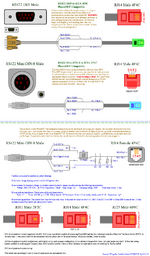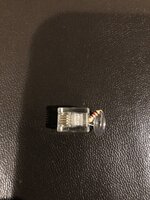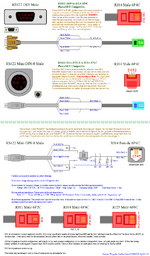Mk.558
Well-known member
Something I've had on my mind for awhile that will go in the next update of the Guide. Have a look and tell me what you think.
I do have two questions: Is there really a +/- fixed polarity on RS422 differential pairs? Couldn't it vary from one pin to the next, like at T+56 Pin 2 is 3.13 volts measured to ground and Pin 3 is -0.9v, but at T+118 it might be the other way around?
Also I'm not sure if I can track down the resistance values they used across the balancing resistors for the DE-9 PhoneNET boxes. Can't remember even seeing one. If you have one it's easy to hook up a DMM to measure across 4 and 8, then 5 and 9. I got 1K ohms on my Mini-DIN-8 box, but the patent says "it depends".

EDIT: updates: add text to first column saying this is for a 512K and 512Ke only
I do have two questions: Is there really a +/- fixed polarity on RS422 differential pairs? Couldn't it vary from one pin to the next, like at T+56 Pin 2 is 3.13 volts measured to ground and Pin 3 is -0.9v, but at T+118 it might be the other way around?
Also I'm not sure if I can track down the resistance values they used across the balancing resistors for the DE-9 PhoneNET boxes. Can't remember even seeing one. If you have one it's easy to hook up a DMM to measure across 4 and 8, then 5 and 9. I got 1K ohms on my Mini-DIN-8 box, but the patent says "it depends".

EDIT: updates: add text to first column saying this is for a 512K and 512Ke only


